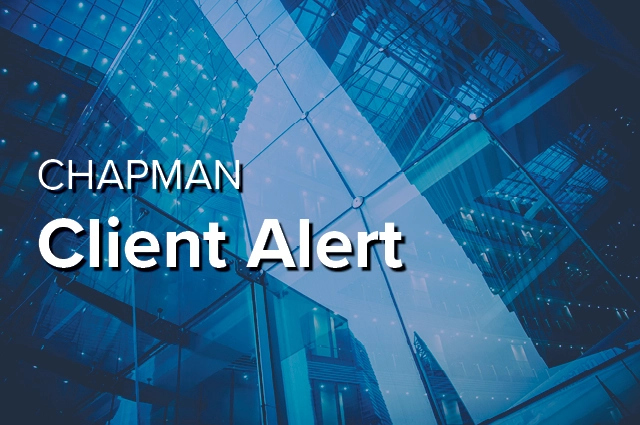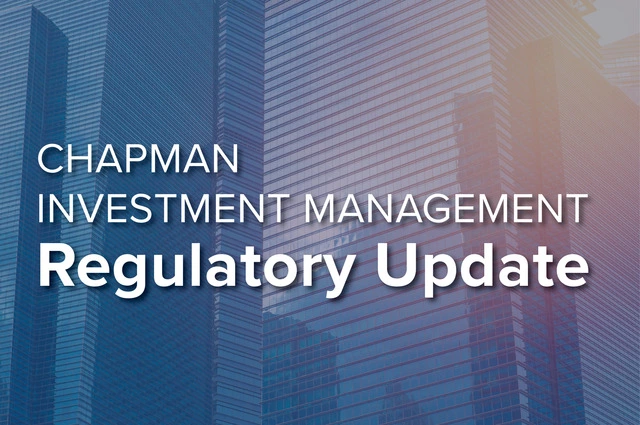- Topic: COVID-19
58 matches.
- April 7, 2020 (Updated June 28, 2022)
On February 19, 2020, the Small Business Reorganization Act came into effect and Debtors with aggregate liabilities that do not exceed $2,566,050 were provided an opportunity to resolve their outstanding liabilities. But even before the SBRA could see its first successes (or failures), the Coronavirus Aid, Relieve and Economic Security Act of 2020 increased a small business’s debt threshold to $7.5 million.
The Occupational Safety and Health Administration released its anticipated COVID-19 Vaccination and Testing: Emergency Temporary Standard, which will require that workers at large private sector businesses be vaccinated or undergo weekly COVID-19 testing.
On June 10, 2021, OSHA issued an Emergency Temporary Standard (ETS) applicable to the healthcare industry regarding COVID-19. The ETS applies to settings where any employee provides healthcare or healthcare support services, with certain specified exceptions.
On March 12, the Occupational Safety and Health Commission announced a National Emphasis Program for COVID-19. The NEP is in response to an Executive Order issued by President Biden directing the Secretary of Labor to launch a national program to focus OSHA enforcement efforts related to COVID-19 on industries with the largest numbers of workers at serious risk.
On December 27, the Consolidated Appropriations Act, 2021 was signed into law, which, among other things, contains an important amendment to Section 547 of the United States Bankruptcy Code.
On November 17, the Securities and Exchange Commission adopted amendments to Rule 302(b) of Regulation S-T, which will provide more flexibility in connection with SEC filings by allowing the use of electronic signatures in authentication documents.
Under the expanded Medicare Accelerated and Advance Payments Program, more than 22,000 Medicare Part A providers and 28,000 Medicare Part B suppliers requested and received accelerated or advance payments from the Centers for Medicare & Medicaid Services to help ease financial strain and uncertainty caused by the COVID-19 pandemic.
- Employee Benefit Plan Review
In June, the IRS issued several notices that provide more details on the SECURE Act, passed in late 2019, and the CARES Act, passed in late March. This Client Alert will cover two primary topics: Coronavirus-Related Distribution Rules and the 2020 RMD Waiver Rule.
As companies default under their credit agreements, lenders have to decide what course of action is appropriate to effectuate their goals. Should the lender give the borrower breathing room by entering into a forbearance agreement in exchange for certain milestones, or is more aggressive enforcement action required?
This is the third and final Client Alert of a three-part series relating to executing a Strict Foreclosure. As discussed in our previous Client Alerts, it is imperative to focus on who is going to run the business after consummating the Strict Foreclosure.
- Journal of Taxation of Financial Products
The CARES Act, which was designed to support individuals and businesses affected by the COVID-19 pandemic, was signed into law on March 27. This article summarizes various tax provisions in the CARES Act.
- Journal of Taxation of Financial Products
The CARES Act, which was enacted to support individuals and businesses affected by the COVID-19 pandemic, provides that borrowers experiencing financial hardship due to the national emergency declared by the President, may request and obtain forbearance on certain federally backed mortgage loans.
This is the second Client Alert of a three-part series relating to executing a Strict Foreclosure.
This Client Alert is part of a three Alert series. This Alert focuses on when Strict Foreclosure can be a lender’s best option and the potential path to execute a Strict Foreclosure.
The Federal Reserve has established the Main Street Loan Program to provide support to small and medium-sized businesses that were in sound financial condition before the onset of the COVID-19 pandemic.
On June 16, the Securities and Exchange Commission issued an order granting registered municipal advisors an emergency, temporary conditional exemption from broker registration under Section 15 of the Securities Exchange Act of 1934 in connection with certain direct placement activities.
The General Assembly passed Senate Bill 2135 on May 23 and the Governor signed the same on June 12. The Act provides greater flexibility for public bodies to conduct business remotely when in-person attendance is not feasible due to a disaster.
On June 11, the Federal Reserve Bank of New York issued an updated Notice of Interest for the Municipal Liquidity Facility to reflect the expansion of eligibility for the facility.
On June 5, the Paycheck Protection Program Flexibility Act of 2020 was signed into law and made key changes to the Paycheck Protection Program just a few weeks before the program’s official termination on June 30.
On June 3, the Federal Reserve announced expanded eligibility for its Municipal Liquidity Facility. Under the new terms, a State that does not have at least two total counties or cities that meet the minimum population requirements will be able to identify a city or county to be an Eligible Issuer.
This client alert will address questions about loan forgiveness under the Paycheck Protection Program for both borrowers and lenders as known at the current time, but we note that legislative efforts currently underway may change the terms of these loan forgiveness provisions.
On May 23, the General Assembly passed Senate Bill 2135, providing for amendments to Sections 2.01 and 7 of the Open Meetings Act of the State of Illinois. The changes provide greater flexibility for public bodies to conduct business remotely when in-person attendance is not feasible due to a disaster.
On May 4, the IRS issued Revenue Procedure 2020‑19, which provides temporary relief to publicly‑offered regulated investment companies and publicly‑offered real estate investment trusts, with respect to stock distributions that are intended to qualify for the dividends-paid deduction.
The Federal Reserve today issued an amended term sheet establishing pricing criteria for its Municipal Liquidity Facility last described in our April 29 Client Alert. The Federal Reserve Bank of New York also issued today a revised FAQs for the facility.
On May 4, the SEC Chairman and the Director of the Office of Municipal Securities issued a public statement encouraging issuers, conduit borrowers and other obligated persons of municipal securities to make disclosures describing the effects of the COVID‑19 pandemic on their finances and operations.
- May 7, 2020 (Updating an April 14, 2020 Client Alert)
This alert explores the three loan facilities constituting the Main Street Lending Program: the newly announced Main Street Priority Loan Facility, the revised Main Street New Loan Facility, and the revised Main Street Expanded Loan Facility.
Treasury Department guidance issued on April 22 summarizes three requirements for the use of payments from the Coronavirus Relief Fund. On May 4, FAQs were issued that “supplements” the guidance by answering a long series of questions about Eligible Expenditures and a shorter list of questions about the Administration of Fund Payments.
On May 5, federal banking regulators adopted an interim final rule that neutralizes the liquidity coverage ratio impact for banks participating in the Federal Reserve’s Money Market Mutual Fund Liquidity Facility and the Paycheck Protection Program Liquidity Facility.
On April 27, the Federal Reserve issued a press release announcing changes to the Municipal Lending Facility described in previous client alerts. At the same time, the Federal Reserve Bank of New York, as sole Reserve Bank lender for the facility, issued a FAQs for the facility.
The Paycheck Protection Program and Health Care Enhancement Act was signed into law today. This alert summarizes key portions of the Act and recently released information from the Department of Health and Human Services explaining its plans to allocate and distribute the Provider Relief Fund money.
- April 22, 2020 (Updating an April 13, 2020 Client Alert)
On April 9, the Federal Reserve issued term sheets for six “new” funding facilities under the CARES Act. This client alert describes in detail the Municipal Liquidity Facility.
Chapman’s "Bankruptcy and Aircraft Finance" handbook details certain special rights afforded aircraft creditors and some of the strategies employed. With the airline industry suffering devastating losses as a result of the COVID-19 pandemic, we hope this will be a useful resource for creditors.
On April 13, the IRS released Revenue Procedure 2020-26, which provides that forbearances and related modifications of certain mortgage loans will not be treated as replacing the unmodified loan with a newly issued loan for purposes of the REMIC and grantor trust qualification tests (and related REMIC-related taxes).
On April 9 the Federal Reserve issued term sheets for six “new” funding facilities under the CARES Act. Three of those facilities provide for direct loans to companies.
The Coronavirus Aid, Relief, and Economic Security Act to support individuals and businesses affected by COVID-19 pandemic was signed into law on March 27. This client alert summarizes the various tax provisions in the CARES Act.
On April 9, 2020, the Federal Reserve released a revised term sheet for TALF 2020 that, among other things, broadens the range of assets that qualify as eligible collateral under the program.
Earlier today the Federal Reserve announced it would establish six new funding facilities supported by Treasury funding authorized by Section 4003(b)(4) of the CARES Act.
In these uncertain times, parties to bond documents (including documents such as continuing covenant agreements) may wish to waive, modify or renegotiate certain provisions, including the forbearance and deferral of debt service, the waiver of provisions or the exercise of certain options.
The SEC has taken several actions to assist funds and advisers in light of the effects of COVID-19. Similarly, FINRA also has taken several actions to provide guidance and certain regulatory relief to its member firms.
The Federal Reserve has established a webpage that provides links to a FAQ and other documents for the Money Market Fund Liquidity Facility described in earlier Chapman client alerts.
Yesterday the Federal Reserve announced it was temporarily removing Treasury securities and deposits at Federal Reserve Banks from the supplementary leverage ratio applicable to Category I-III bank holding companies or US intermediate holding companies of foreign banks.
In response to the COVID-19 pandemic, federal and state courts throughout the country are issuing general orders providing for important changes to procedures for pending and newly scheduled court hearings. This is a summary of such procedural changes for the federal courts located in Chicago and the state courts in Cook and the surrounding collar counties.
- April 1, 2020 (Updating a March 31, 2020 Client Alert)
This client alert has been updated from our March 31, 2020 client alert to reflect guidance from the U.S. Treasury Department and the Small Business Administration.
The $2 trillion stimulus bill is the largest stimulus bill in U.S. history and Congress’ third major piece of legislation to address the COVID-19 crisis. This client alert summarizes notable CARES Act provisions for Institutions of Higher Education.
The cornerstone of the CARES Act’s relief package for small businesses is the Paycheck Protection Program, under which the Small Business Administration will guarantee up to $349 billion in small business loans.
The Coronavirus Aid, Relief, and Economic Security Act, a bill designed to provide financial support and resources to individuals and businesses affected by COVID-19 pandemic, was signed into law on March 27. This client alert summarizes notable CARES Act provisions for health care businesses, including hospitals and physician practices.
This Client Alert focuses on some major programs established by the Coronavirus Aid, Relief, and Economic Security Act to financially support, through loans or grants, (1) small businesses, (2) larger businesses, and (3) states and municipalities.
While many questions and uncertainties exist with respect to the impact of COVID-19 on the economy, this is an overview of the prominent issues for lenders to consider regarding existing middle market credit agreements – particularly, as a spike in amendment and waiver activity is expected in coming months.
As Employers are facing unprecedented health and safety issues in connection with the COVID-19 pandemic and the rapidly changing nature of government mandates put in place to contain the spread of the virus, the United States Department of Labor, Occupational Safety and Health Administration has issued Guidance on Preparing Workplaces for COVID-19.
H.R. 748 better known as the CARES Act or more informally as the $2 trillion stimulus bill signed by President Trump on March 27, 2020, contains one important provision for all consumer lenders and another two provisions related to federally-backed mortgage loans.
On March 23, the Federal Reserve announced the establishment of the Term Asset-Backed Securities Loan Facility to support the flow of credit to consumers and businesses.
On March 23, the Federal Reserve issued further amendments to add negotiable certificates of deposit and all short-term municipal securities to the list of eligible collateral.
On March 23, the Federal Reserve added municipal issuers and amended the pricing for the commercial paper funding facility announced on March 17 and issued other “program terms and conditions” posted on the website of the Federal Reserve Bank of New York.
This morning, the Board of Governors of the Federal Reserve System announced sweeping actions to help the economy.
On March 18, the Federal Reserve announced a Money Market Fund Liquidity Facility to make loans to banks and certain affiliates secured by certain assets acquired from “prime” money market funds. Earlier today, the Federal Reserve issued amendments to the program.
On March 17, the Federal Reserve Board announced the establishment of two emergency funding facilities that closely mirror facilities established in 2008 during the last financial crisis in providing liquidity to both short and long term funding markets.
In response to the COVID-19 pandemic, federal and state courts throughout the country are issuing general orders providing for important changes to procedures for pending and newly scheduled court hearings.









